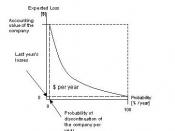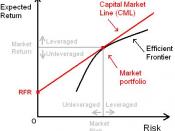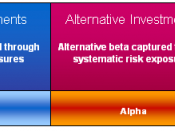On a general level, investment managers and academic economists have long been aware of the necessity of taking returns as well as risk into account: "all your eggs should not be placed in the same basket". This is where the idea of holding a portfolio of shares comes from. Modern portfolio theory (MPT), or portfolio theory, was introduced by Harry Markowitz with his paper "Portfolio Selection" which appeared in the 1952 Journal of Finance. Thirty-eight years later, he shared a Nobel Prize with Merton Miller and William Sharpe for what has become a broad theory for portfolio selection. Portfolio theory explores how risk averse investors construct portfolios in order to optimise expected returns for a given level of market risk. The theory quantifies the benefits of diversification. Out of a universe of risky assets, an efficient frontier of optimal portfolios can be constructed. Each portfolio on the efficient frontier offers the maximum possible expected return for a given level of risk.
An example of this can be seen below.
The Efficiency Frontier
The green region corresponds to the achievable risk-return space. For every point in that region, there will be at least one portfolio that can be constructed and has the risk and return corresponding to that point. The efficient frontier is the gold curve that runs along the top of the achievable region. Portfolios on the efficient frontier are optimal in both the sense that they offer maximal expected return for some given level of risk and minimal risk for some given level of expected return. Typically, the portfolios that comprise the efficient frontier are the ones that are most highly diversified. Less diversified portfolios tend to be closer to the middle of the achievable region. Investors should hold one of the optimal portfolios on the...



Many mistakes in this article
there are many mistakes in this article, and 110%+12%=22% ??? and too many contents just copyed from websites.
1 out of 1 people found this comment useful.